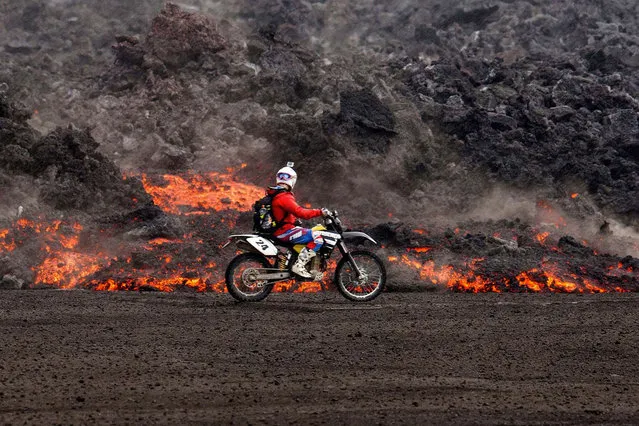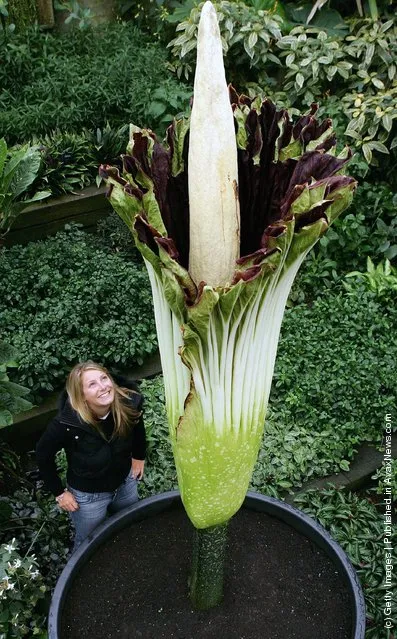
A brave photographer managed to get within metres of an active volcano despite it spewing out lava waves over 140 metres high. Silhouetted against a fiery fountain of red, Icelandic photographer, Tómas Freyr Kristjánsson, 37, braved blistering temperatures to get as close the volcano as possible. Although very few were brave enough to get so close, Tómas managed to photograph nearby tourists to give some scale to the spraying molten rock, including that of a nearby motorcyclist. (Photo by Tómas Freyr Kristjánsson/Caters News)
03 Feb 2015 13:14:00,post received
0 comments







